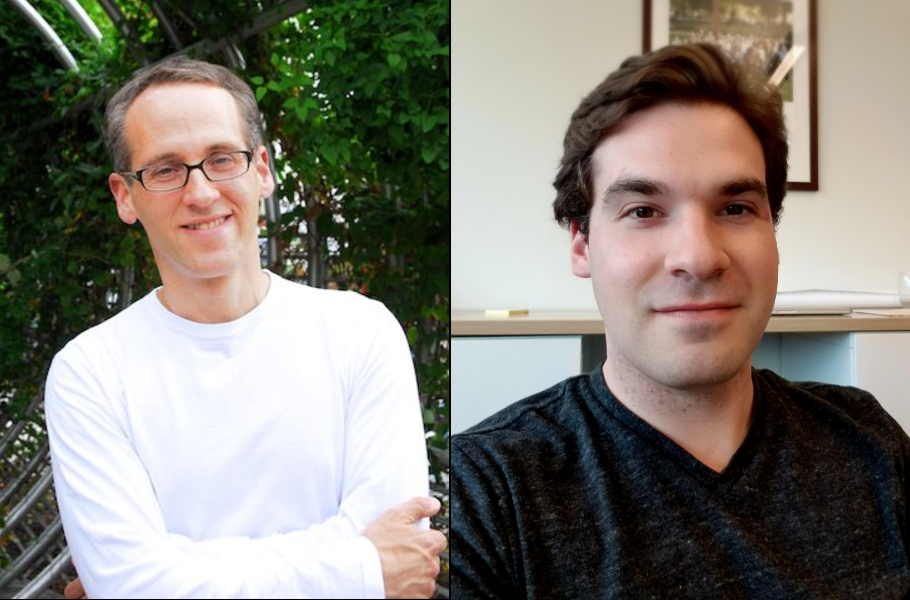The brain constructs maps to guide people, not just of physical spaces but also to connect stimuli around them, like conversations and other people. It’s long been known that the brain area responsible for this spatial navigation—the medial temporal lobe—is also involved in recalling memories.
Now, neuroscientists at the University of Pennsylvania have discovered that the signals the brain produces during spatial navigation and episodic memory recall look similar. Low-frequency brain waves called the theta rhythm appear as people jump from one memory to the next, as many prior studies looking only at human navigation have shown. The new findings, which suggest that the brain structures responsible for helping people navigate the world may also “navigate” a mental map of prior experiences, appear in the Proceedings of the National Academy of Sciences.
“We knew that the same part of the brain was responsible for both of these, but we didn’t know that the activity looked the same,” says Ethan Solomon, lead author and an M.D./Ph.D. candidate in the Perelman School of Medicine. “This work builds evidence that memory and navigation are not so different. We’ve physiologically linked these two cognitive processes.”
Solomon, along with Penn psychology professor Michael Kahana, Michael Sperling of Thomas Jefferson University, and Bradley Lega of the University of Texas Southwestern, worked with nearly 200 patients undergoing clinical monitoring for seizures. The patients, who already had electrodes implanted under their skulls as part of their monitoring, viewed lists of 12 words and then, following a brief mathematical distraction, were asked to recite as many as possible from each list. During this free recall, the researchers recorded the patterns of electrical activity generated by each subject’s medial temporal lobe.
Analyzing these signals, Kahana and colleagues found that when subjects recalled words with similar meanings or those that had appeared near each other on a list, the hippocampus—a key structure within the brain’s medial temporal lobe—exhibited a characteristic electrical wave pattern called the theta rhythm. Specifically, this is a slow oscillation of neural electrical activity that appears prominently during spatial navigation.
“Many prior studies have sought to link theta activity to memories,” Solomon says. “But this research represents the first time that theta activity specifically within the hippocampus has been shown to directly correlate with specific features of items in memory, such as a word’s list position or semantic meaning.”
The research built on a multicenter effort to collect neural recordings from hundreds of neurosurgical subjects, funded partially through the Brain Research through Advancing Innovative Neurotechnologies, or BRAIN Initiative, a National Institutes of Health-funded program focused on increasing overall knowledge of the human brain and how it functions. In total, the research involved data from 189 subjects, with 96 subjects contributing electrophysiological data.
“The brain endows us with the remarkable ability to search our memories on the basis of their meaning and the time and location of their occurrence,” says Kahana, the Edmund J. and Louise W. Kahn Term Professor of Psychology in Penn’s School of Arts and Sciences. “This study suggests that the theta rhythm of the hippocampus serves a crucial function within the memory search mechanism.”
Though considerable prior work had investigated the neural basis of learning new information, patients suffering from memory loss due to neurological injury or disease often exhibit profound deficits in retrieving well-known memories. These include patients with severe epilepsy, who made up the population studied by the research team.
“Eventually, an enhanced understanding of hippocampal function may lead to innovative new clinical therapies, perhaps through brain-stimulation techniques that can improve memory search,” Sperling says. “That has the potential to significantly improve the lives of patients living with memory loss.”
Funding for this research came from the National Institutes of Health (Grant MH55687) and the Defense Advanced Research Projects Agency’s Restoring Active Memory (RAM) program (Cooperative Agreement N66001-14-2-4032.)
Michael Kahana is principal investigator in the Defense Advanced Research Projects Agency’s
RAM program and is the Edmund J. and Louise W. Kahn Term Professor of Psychology in the Department of Psychology in the School of Arts and Sciences at the University of Pennsylvania.
Ethan Solomon is an M.D./Ph.D. student in the Department of Bioengineering of the School of Engineering and Applied Science and in the Perelman School of Medicine at the University of Pennsylvania.
Other researchers who contributed to this work include Michael Sperling, the Baldwin Keys Professor of Neurology at Thomas Jefferson University, and Bradley Lega, an assistant professor in the Department of Neurological Surgery at the University of Texas Southwestern Medical Center.









